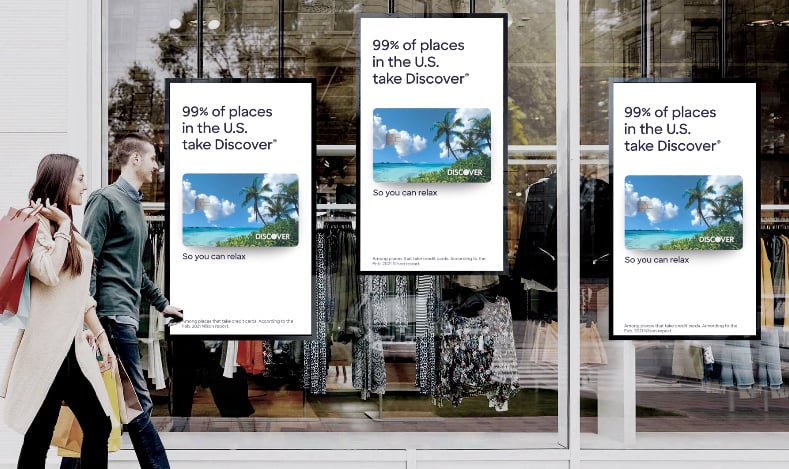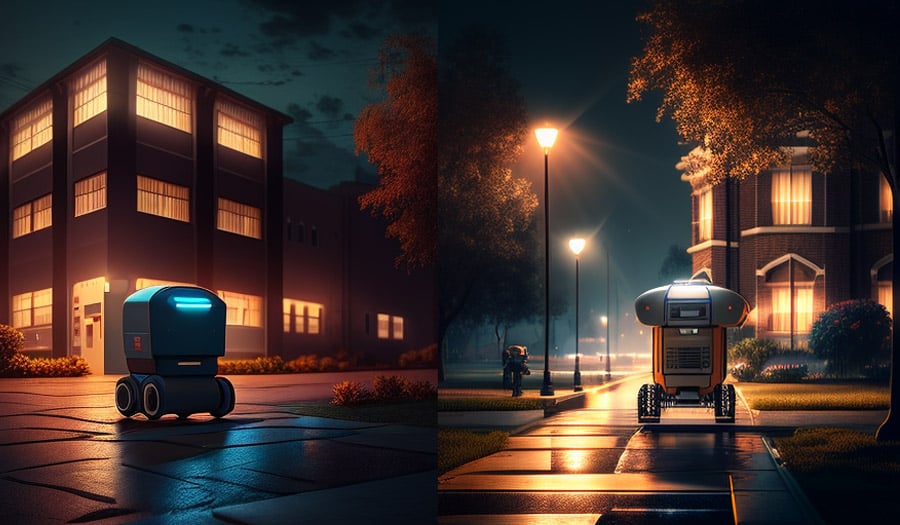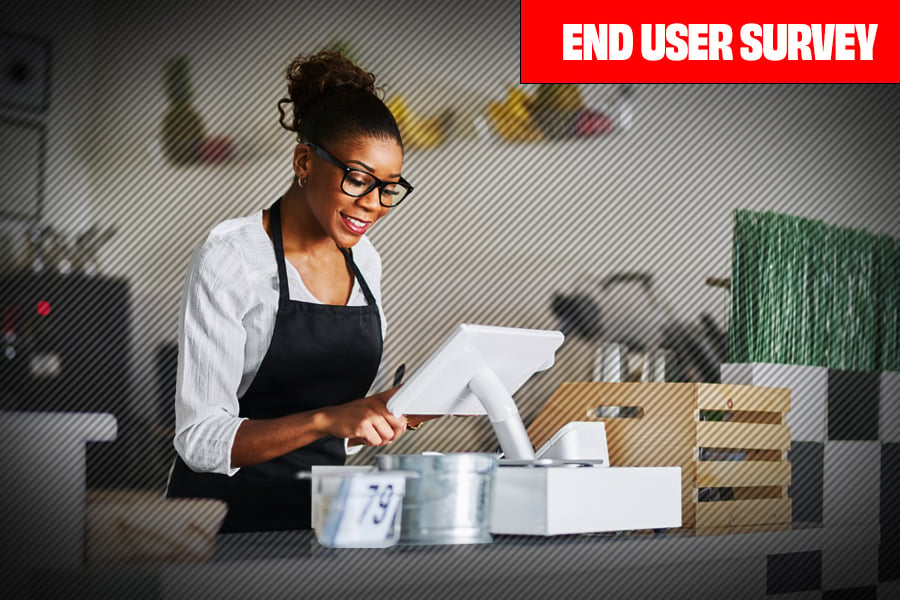
We asked 72 restaurant leaders about their current point-of-sale systems. What are they currently using? How long? How do they rate the system, and what's the best/worst part of using it? Are they using innovations like handheld devices, digital menu boards, or QR codes? We also asked how likely they were to switch. Read on for the results and our insights!
Our goal was to understand more about what systems restaurants currently use, their happiness with them, and if there are opportunities for VARs to win new business in a very competitive industry.
Like our previous survey on retail POS, the results don't make it any easier to sell this tech to restaurants. They use a variety of platforms; most are happy with what they have and would need compelling reasons to switch. We did learn a few things and found out there is plenty of opportunity to sell other technology too.
Let’s break down the survey results!
The Methodology
We made 6,085 calls to get 72 responses. Nearly all respondents were owners, CEOs, directors of operations, or managers. We spoke to everyone from small local eateries with one location to multi-store companies, food service operators, and franchise owners. Respondents came from all across the continental US (see map below).
For responses requiring a numerical rating, if the respondent gave us a range, we used a median number or the lowest of two to determine where it fell in our charts.
Respondents were offered a $15 gift card for their participation.
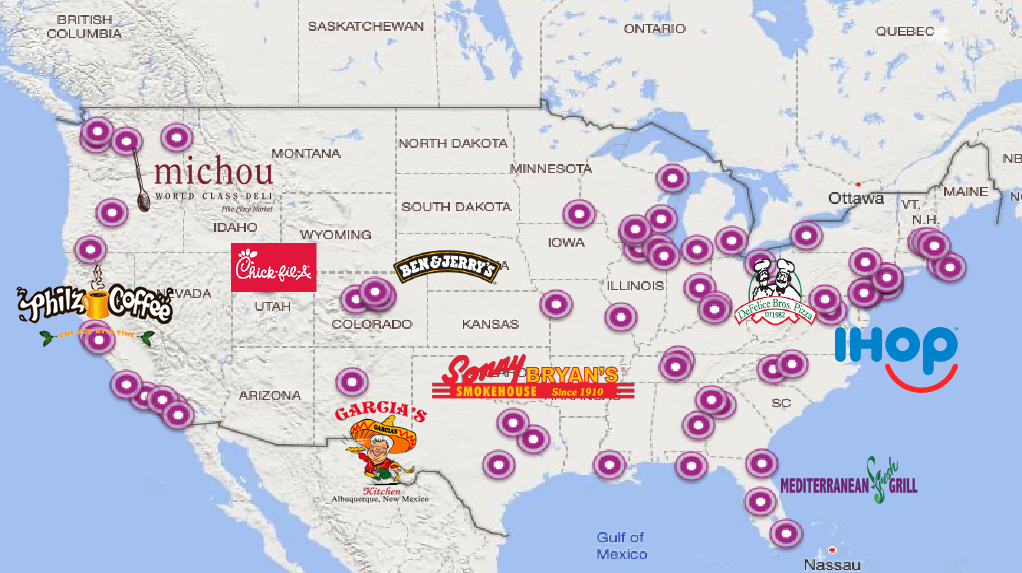
Our Findings
We started by asking about the point-of-sale system currently in use.
Question 1:
About how long have you been using your current POS system?
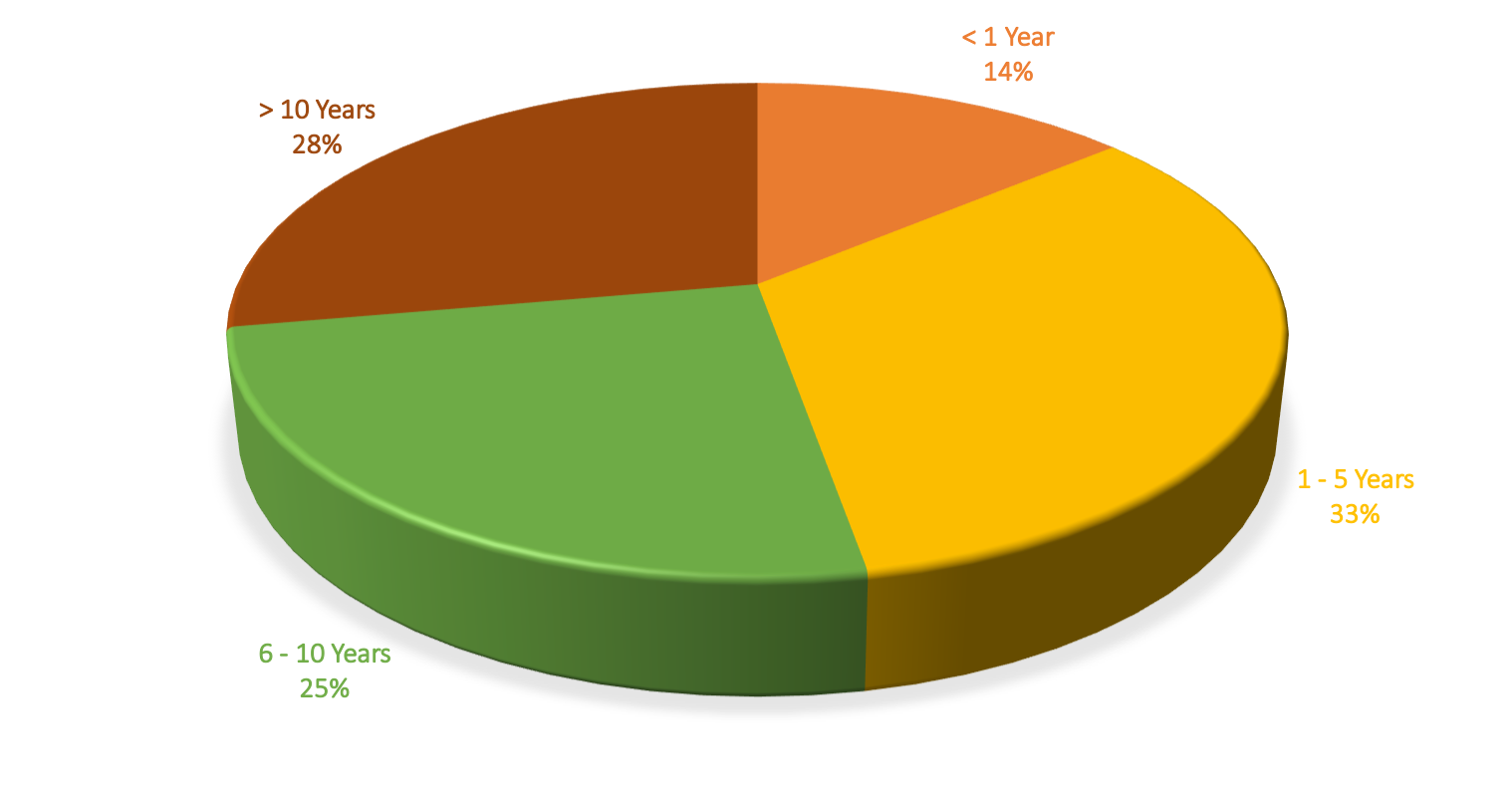
Question 2:
Which POS system are you using?
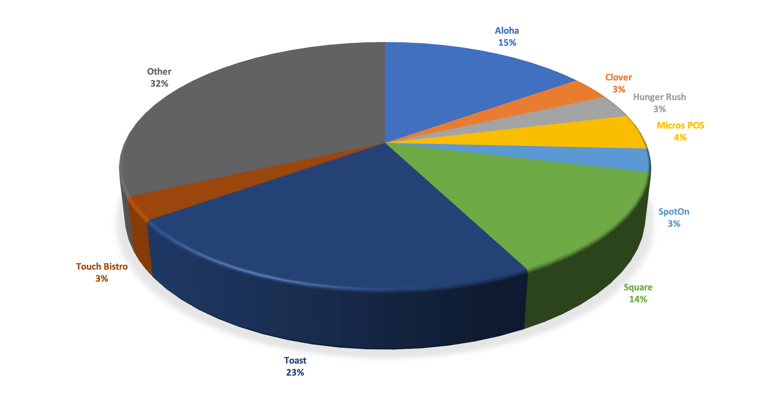
Not surprisingly, most restaurants are pretty tied to their POS. Over 50% of those surveyed have used their current systems for over five years. Ten respondents were going on 20 years or longer.
As for the brands in use, a wide variety was in play, but Toast (15 users), Aloha (10), and Square (9) led the way. It should be noted that two Aloha users said they'd be switching to Toast soon, however.
Correlating the two sets of data, most Aloha users had been doing so for 10+ years, Toast users were likely less than five years (many were less than a year, even), and Square users were typically mid-range--5-10 years.
Next, we wanted to understand their feelings for their current POS.
Question 3:
On a scale of 1-10, how would you rate your system when it comes to ease of use and reliability?
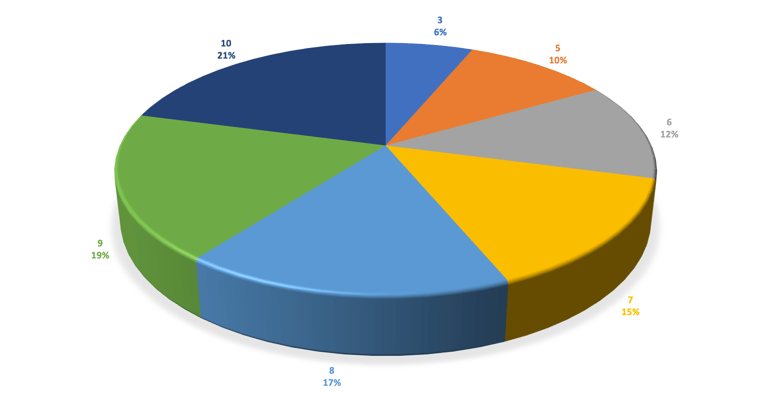
In addition to lengthy POS system usage, most respondents expressed contentment with their current setup. 72% rated ease of use & reliability at a 7 or better. Only two people said less than a 5.
Digging deeper, we also asked what they liked most and least about their POS.
Question 4:
What do you like most about your current point of sale?
Overwhelmingly, comments like "easy to use" and "simplicity" were the top response here. Precisely 50% of those surveyed used those words or similar language.
The subsequent most common accolades were similar. About 18% commented on their system's reporting capabilities or services that allowed for mobility, cloud access from anywhere, and made it easy to marry front- and back-of-house operations. Toast, in particular, got much praise for data management and BOH connectivity.
A few more attributes that stood out:- Easy to train employees
- Ability to do quick/simple price changes
- Menu management (esp. with Toast)
- Customization
- Payment processing
- Integration with other systems (like inventory and manufacturing)
Question 5:
What do you like least about your current point of sale?
Responses were a little broader to this question, but 25% of those surveyed said "nothing" or had no complaints about their POS. The most common complaints were related to systems that were glitchy, unreliable, frequently crashed, or had connectivity issues. Service and support also showed up frequently as a concern.
"It is not surprising that businesses want their POS to be easy and simple and not glitchy or unreliable. What is surprising is that businesses will trade simplicity for glitchy and unreliable. It feels to us that it has to be not only simple and reliable but also powerful in order to meet the needs of today's restaurants and retailers."
- Andre Nataf, SVP of POS Distribution for Heartland
Other problem areas:
- Difficult to use
- Payment processing
- Speed
- Back-of-house integration
- Out-of-date
- Interface
That service and support issue is important, so we asked for additional clarity.
Question 6:
How would you rate your system's technical support (1-10)?
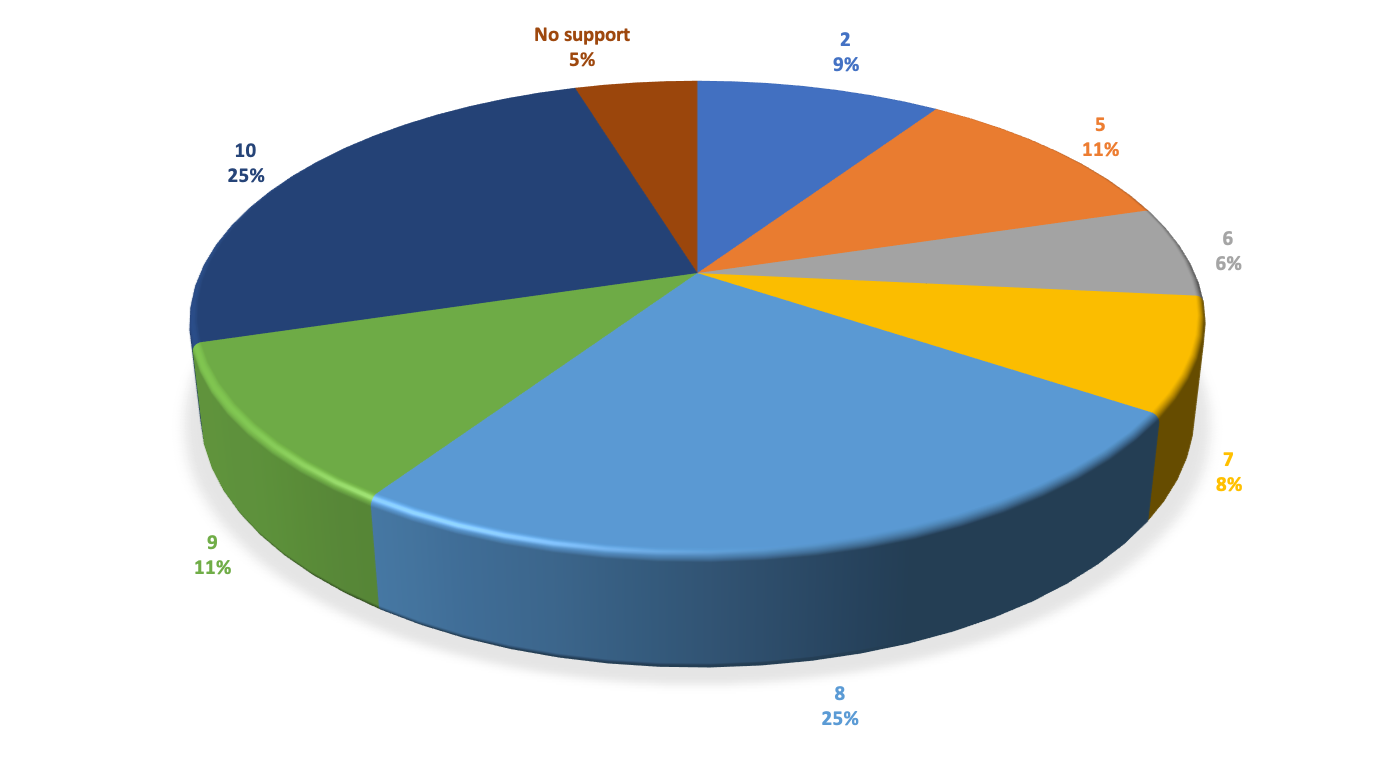
Technical support can be a sore subject for many businesses, but despite that ranking high on the "least liked" aspect of their POS, most restauranteurs (61%) gave their support a rating of 8 or higher. Only 14% scored it lower than a 5 or claimed they had no support.
Again, the big-name systems typically scored well, but Toast did have a handful of low scores and negative comments.
At this point, we wanted to ask the big question on the mind of most VARs when approaching restaurants...the likelihood that they would switch POS systems.
Question 7:
Would you consider changing to another POS?
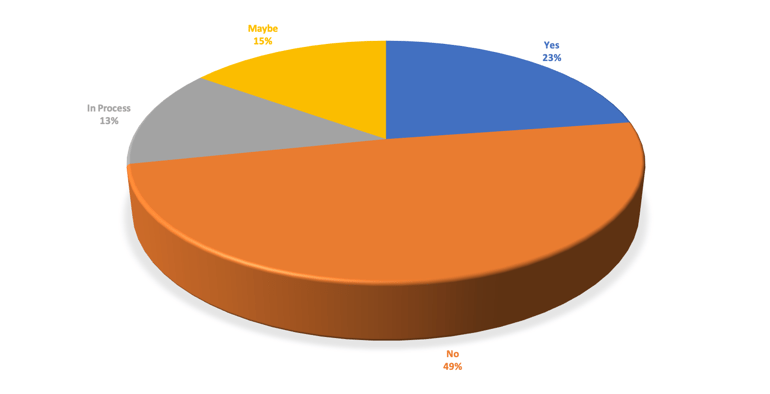
Nearly half of the users would not consider changing, but at least 12 indicated that it wasn't their decision to make, citing corporate or upper management as the ultimate decision-makers.
Digging deeper, we also wanted to know what they feared about switching.
Question 8:
If you had to switch, what do you think would be the biggest challenge in making the transition?
This was another question where the concerns were evident. 37% indicated that training would be the most challenging part for themselves and their employees. At 18%, many were also worried about the transition from one system to the next, whether it was the process itself, doing it for multiple locations, integrations, or making it all seamless.
Other challenges:- Cost to switch
- Time involved with switching
- Convincing themselves, the owner, or corporate to do so
- Moving data and menus from one to the other without losing anything
Now that we have a strong understanding of restaurant POS preferences and pain points, we must explore a couple more customer-facing technologies that could present opportunities for VARs.
Question 9:
Do your servers use handheld tablets or smart devices to take orders?
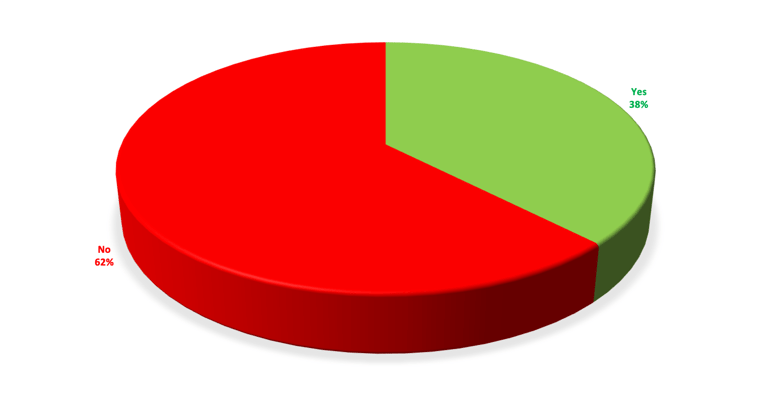
While most restaurants aren't using handheld devices for table services, that 38% "yes" number is probably much higher than it would have been even a couple of years ago. Toast is leading the way here, as most users said yes. Others indicated they were heading toward handhelds or had the capability within their POS but chose not to use it.
Question 10:
Does your restaurant have digital menu boards? Why or why not?
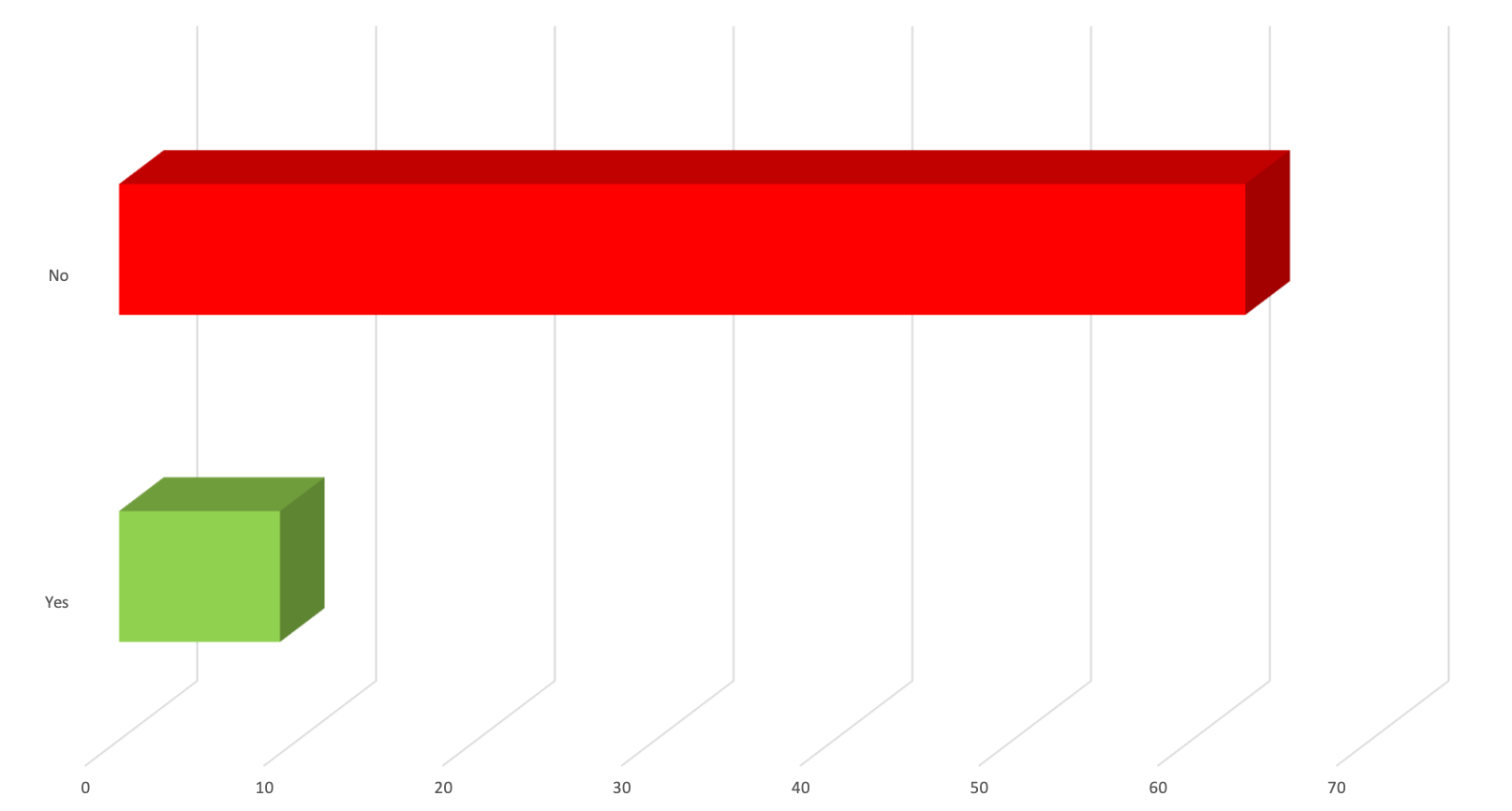
This was a lopsided result. Sixty-three of our respondents do not currently deploy digital menu boards, compared to only nine that do.
The "why not" question yielded some interesting responses here. Thirteen owners did not see a need or use for them, many citing that they did not fit their business model.
Other reasons they aren't using digital menus:- Used during COVID but no longer necessary
- Testing/considering
- Use/prefer paper menus
- Franchise/owner makes the decision
- Cost
- Customers don't want them (often framed as "older" customers)
- Doesn't like how they look
- Not enough space
For those that did say yes, reasons included that they were very cost-efficient, allowed for "fun promotional stuff," and that it allowed them to display specials before guests received the full paper menu at the table.
Question 11:
Do you use QR code menus at your restaurant?
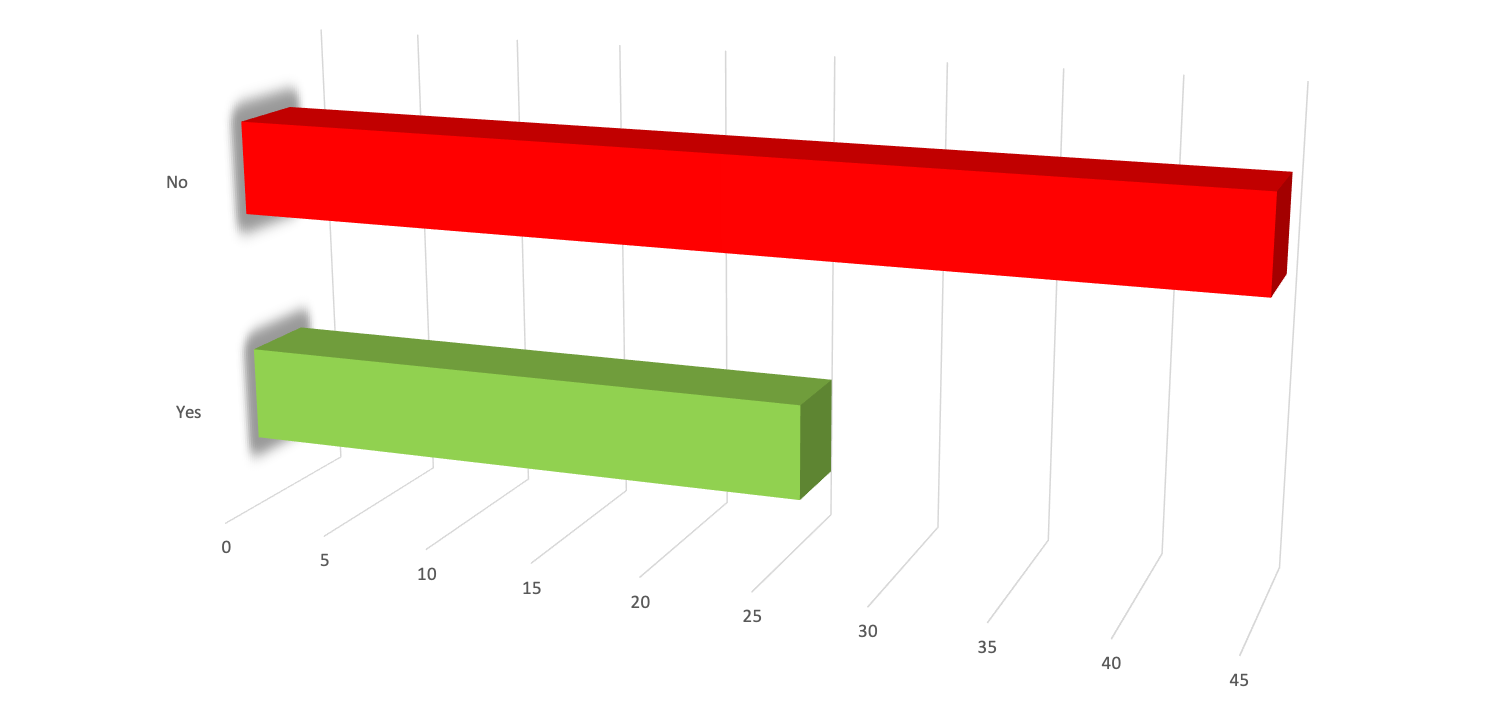
Many of the "no"s for digital menu boards turned to "yes" here, indicating some interest in modernizing their menu delivery.
Key Takeaways
Randomly hoping that you'll catch a restaurant ready to change its point-of-sale system isn't a great tactic, but, like many businesses, presenting yourself as a partner and tech expert makes it more likely that you'll get the call when it happens. Whether directly selling POS software or facilitating it with hardware, make sure that your team is knowledgeable about the system to answer questions, make transition and training as smooth as possible, and be a reliable option for technical support.
A great way to insert yourself in future POS discussions is to consult and advise on other technology for their business. Digital menu boards may seem unpopular, but the responses indicate that restaurant owners need to see the value in them. Rather than just a giant board behind the counter of a fast-food joint or a self-service kiosk, digital signage can be an eye-catching way to showcase high-ticket menu items, specials, and promotions as diners wait to be seated or even outdoors as they pass by. Handheld devices can speed up customer service and table turnover during the busiest times. Restaurants that adopted tech like this or QR codes during the pandemic should be encouraged to keep it as the new baseline of customer service, not a fad that's outlived its utility.
“VARs need to find the pain. There are tons of restaurants out there with pain that the VARs can solve if they spend the right time and energy looking for the problem statements.”
- Jeremy Julian - COO, Custom Business Solutions & host of The Restaurant Technology Guys Podcast




